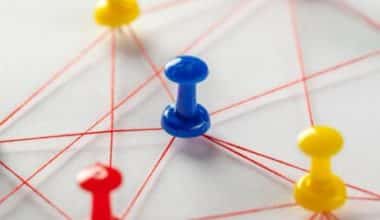Do you want to up the ante on your marketing efforts? Think about using a lifecycle marketing strategy. Understanding the client experience and developing a strategy that emphasizes delivering the appropriate message at the right time are crucial management skills. A potent strategy called lifecycle marketing considers every stage of the client experience, from first awareness through interaction after the sale. You may strengthen your relationships with your clients and raise their lifetime value by adjusting your marketing strategies at each stage. So start considering using a lifecycle marketing model if you want to maximize your marketing efforts and produce better outcomes. Let’s look at the lifecycle marketing meaning, strategy, model, manager & customer marketing.
What is Lifecycle Marketing?
A lifecycle marketing strategy refers to a customer-centric approach that involves a manager using a model to understand a customer’s journey, from initial awareness to post-purchase, in order to optimize each stage. Lifecycle marketing is also a strategic marketing technique that analyzes the customer’s whole journey with a company, from the moment they become aware of the brand to the point where they become loyal, repeat customers. This method focuses on determining the most successful ways to engage and communicate with customers at each stage of the customer journey.
Awareness, deliberation, decision-making, purchase, and post-purchase are typical stages of the consumer journey. However, the customer’s needs, motives, and preferences alter at each step. During the awareness stage, for example, a consumer may be looking for information about a product or service as well as solutions to their inquiries. During the decision-making process, the client may compare many possibilities and weigh the advantages and disadvantages of each.
Businesses must have a deep understanding of their target audience and also utilize data-driven insights to personalize their messaging and experiences to effectively engage customers at each level. This can also include developing tailored content and offers that are relevant to the customer’s interests, delivering excellent customer care and support, and employing marketing automation systems to deliver targeted messages at the appropriate moment.
Businesses that use a lifecycle marketing approach can also strengthen client connections, enhance customer loyalty, and promote long-term revenue development. This strategy works especially well in today’s highly competitive market. When customers have more options than ever before and are increasingly looking for brands that emphasize their wants and preferences.
Lifecycle Marketing Strategy
A lifecycle marketing strategy involves designing and executing marketing campaigns and tactics that are tailored to the different stages of a customer’s lifecycle. Here are some steps businesses can also take to develop an effective lifecycle marketing strategy:
#1. Define Your Customer Lifecycle Stages
Start by mapping out the different stages that your customers go through, from initial awareness to repeat purchases and advocacy. Make sure to identify the key touchpoints and behaviors that signal each stage.
#2. Identify Your Customer Personas
Next, create detailed customer personas that represent the different segments of your target audience. This will also help you understand their needs, preferences, pain points, and behaviors at each stage of the lifecycle.
#3. Develop a Content Strategy
Based on your customer personas and lifecycle stages, create a content strategy that includes different types of content, such as blog posts, videos, social media posts, email campaigns, and webinars. Ensure that your content addresses the needs and interests of customers at each stage of the lifecycle.
#4. Build a Lead Nurturing System
To convert prospects into customers, create a lead nurturing system that includes email marketing campaigns, retargeting ads, and personalized offers. Also, use automation tools to send targeted messages based on customers’ behavior and interests.
#5. Measure and Optimize
Use data and analytics to track customer behavior and measure the effectiveness of your marketing campaigns. Identify areas for improvement and optimize your strategy based on customer feedback and performance metrics.
#6. Create a Loyalty Program
To retain customers and increase lifetime value, create a loyalty program that rewards customers for their purchases and engagement. Also, use personalized communication and upselling/cross-selling tactics to encourage repeat purchases.
#7. Leverage Customer Advocacy
Finally, use customer advocacy to attract new customers and drive growth. Encourage satisfied customers to share their experiences on social media, leave reviews, and refer friends and family to your business.
Lifecycle Marketing Model
The lifecycle marketing model is a framework that aims to guide businesses in developing and executing a customer-centric marketing strategy throughout the different stages of a customer’s lifecycle. This model typically involves five stages:
#1. Attract
In this stage, businesses aim to attract potential customers through various marketing channels such as advertising, social media, content marketing, and SEO. The goal is to generate awareness and interest in the brand and its products or services.
#2. Convert
Once potential customers are aware of the brand, the focus shifts to converting them into paying customers. This stage involves lead generation, lead nurturing, and closing sales through various channels such as email marketing, social media, retargeting, and sales calls.
#3. Fulfill
After customers make a purchase, the business must deliver the product or service in a way that meets or exceeds the customer’s expectations. This stage also includes order fulfillment, shipping, delivery, and customer support.
#4. Retain
The retention stage aims to keep customers engaged with the brand and also build long-term relationships. This can also be achieved through personalized communication, loyalty programs, post-purchase support, and upselling/cross-selling.
#5. Advocate
In the final stage, satisfied customers become brand advocates who promote the brand to others through word-of-mouth and social media. This stage also involves building a community of brand advocates, encouraging user-generated content, and leveraging customer reviews and referrals to drive new business.
Overall, the lifecycle marketing model emphasizes the importance of building relationships with customers at every stage of their journey rather than just focusing on acquiring new ones. By doing so, businesses can create loyal customers who will continue to support the brand over time.
Lifecycle Marketing Manager
A lifecycle marketing manager is responsible for developing and executing a comprehensive marketing strategy that targets customers at different stages of their lifecycle. Here are some key responsibilities of a lifecycle marketing manager:
#1. Develop a Customer Lifecycle Framework
The manager should map out the different stages that customers go through, and identify the key touchpoints and behaviors that signal each stage.
#2. Create Customer Personas
Based on customer data and research, the manager should also create detailed customer personas that represent the different segments of the target audience. This will also help to understand the needs, preferences, pain points, and behaviors of customers at each stage of the lifecycle.
#3. Develop a Content Strategy
The manager should create a content strategy that includes different types of content, such as blog posts, videos, social media posts, email campaigns, and webinars. Ensure that the content addresses the needs and interests of customers at each stage of the lifecycle.
#4. Build a Lead Nurturing System
The manager should create a lead nurturing system that includes email marketing campaigns, retargeting ads, and personalized offers. Also, use automation tools to send targeted messages based on customers’ behavior and interests.
#5. Measure and Optimize
The manager should also use data and analytics to track customer behavior and measure the effectiveness of marketing campaigns. Identify areas of improvement and also optimize the strategy based on customer feedback and performance metrics.
#6. Create a Loyalty Program
The manager should create a loyalty program that rewards customers for their purchases and engagement. Also, use personalized communication and upselling/cross-selling tactics to encourage repeat purchases.
#7. Leverage Customer Advocacy
The manager should encourage satisfied customers to share their experiences on social media, leave reviews, and refer friends and family to the business. Use customer advocacy to also attract new customers and drive growth.
Overall, a lifecycle marketing manager plays a crucial role in creating a customer-centric marketing strategy that drives engagement, loyalty, and growth over time. They must be data-driven, and creative, and also have a deep understanding of customer behavior and marketing best practices.
Customer Lifecycle Marketing
Customer lifecycle marketing is a strategy that focuses on creating a personalized experience for customers at each stage of their journey with a brand. Here are the five stages of the customer lifecycle in customer lifecycle marketing:
#1. Acquisition
This stage is all about attracting potential customers and getting them interested in the brand. However, the strategies for this stage include SEO, social media, content marketing, paid advertising, and email marketing.
#2. Onboarding
Once a customer has made a purchase, the onboarding stage begins. The focus here is on delivering a seamless and positive experience, ensuring that the customer is satisfied with their purchase, and addressing any questions or concerns they may also have.
#3. Engagement
After a customer has been onboarded, the focus shifts to engagement. The goal is to keep the customer engaged with the brand and its products or services through regular communication, personalized content, and customer support.
#4. Retention
The retention stage aims to keep customers coming back for more. This involves offering personalized recommendations, loyalty programs, and exclusive offers to encourage repeat purchases.
#5. Advocacy
In the final stage, satisfied customers become advocates for the brand, promoting it to others through word-of-mouth and social media. However, the strategies for this stage include customer referral programs, user-generated content, and customer reviews.
By focusing on each stage of the customer lifecycle and creating a personalized experience for customers at each stage, businesses can also build long-term relationships with their customers and increase customer lifetime value. Customer lifecycle marketing emphasizes the importance of understanding customer needs, preferences, and behavior, and also tailoring marketing efforts to meet those needs throughout the customer journey.
What Are the 5 Stages of the Customer Life Cycle?
Here are the five stages of the customer life cycle:
#1. Awareness/Discovery
This is the stage where potential customers become aware of the brand and its products or services. The goal is to attract customers and create interest in the brand.
#2. Consideration/Interest
Once a potential customer is aware of the brand, the focus shifts to building interest and consideration for the products or services. The goal is to convince the customer that the brand’s offerings are the best solution for their needs.
#3. Conversion/Purchase
In this stage, the customer decides to make a purchase and becomes a paying customer. The goal is to ensure that the customer has a positive experience and is also satisfied with their purchase.
#4. Retention/Loyalty
After the purchase, the focus shifts to building a long-term relationship with the customer. The goal is to keep the customer engaged with the brand, encourage repeat purchases, and also build brand loyalty.
#5. Advocacy/Referral
In the final stage, satisfied customers become brand advocates and also refer others to the brand through word-of-mouth and social media. However, the goal is to leverage customer advocacy to attract new customers and build brand loyalty.
Is Lifecycle Marketing the Same as CRM?
Lifecycle marketing and customer relationship management (CRM) are related concepts, but they are not the same thing. While both approaches aim to build strong relationships with customers, they focus on different aspects of the customer experience. Lifecycle marketing is a marketing strategy that focuses on delivering personalized content and experiences to customers at each stage of their journey with a brand, from awareness to advocacy. However, the goal is to improve the customer experience, increase customer satisfaction and loyalty, and drive revenue growth.
On the other hand, CRM is a business strategy that aims to manage and analyze customer interactions and data throughout the customer lifecycle, with the goal of improving customer relationships and driving business growth. CRM focuses on the management of customer data and interactions, including sales, marketing, and customer service, to provide a better understanding of customers and also improve business operations. While lifecycle marketing and CRM share a common goal of building strong customer relationships, they approach the customer experience from different angles. Lifecycle marketing focuses on delivering personalized experiences to customers, while CRM focuses on managing and analyzing customer data to improve business operations.
What Is the Goal of Lifecycle Marketing?
The goal of lifecycle marketing is to engage with customers at each stage of their journey. By doing so, it aims to build trust, foster loyalty, and encourage repeat business. This is achieved through personalized and relevant messaging and experiences that meet the customer’s needs and expectations. Finally, the goal is to drive revenue growth and increase customer lifetime value.
What Are the 4 Stages of the Customer Life Cycle?
There are typically four stages of the customer life cycle:
- Acquisition Stage
- Onboarding Stage
- Engagement Stage
- Retention Stage
What Is the 6-Stage Customer Lifecycle Showing the Key Stages?
The 6-stage customer lifecycle includes the following:
- Awareness Stage
- Consideration Stage
- Purchase Stage
- Retention Stage
- Advocacy Stage, And
- The Loyalty Stage
What Is B2B Lifecycle Strategy?
B2B lifecycle strategy is a marketing approach that focuses on understanding the needs and behaviors of business customers at each stage of their journey, from initial awareness to post-purchase advocacy. However, it involves developing targeted messaging and experiences to address the unique pain points and challenges faced by B2B customers, with the goal of building long-term relationships, increasing customer retention, and driving revenue growth.
The B2B lifecycle strategy typically includes the following stages:
- Awareness: This is the stage where potential customers become aware of the brand and its offerings.
- Consideration: In this stage, the customer evaluates the brand’s offerings and compares them with competitors.
- Decision: This is the stage where the customer decides to make a purchase and becomes a paying customer.
- Implementation: After the purchase, the focus shifts to ensuring that the customer has a positive experience with the product or service.
- Retention: The retention stage aims to keep the customer engaged with the brand and encourage repeat purchases.
- Advocacy: The final stage involves leveraging customer satisfaction to build brand loyalty and drive new business through referrals and recommendations.
What Are the Benefits of Lifecycle Marketing?
There are several benefits of lifecycle marketing that businesses can take advantage of. Firstly, by delivering personalized and relevant messaging and experiences to customers, businesses can create a positive and memorable experience for their customers. Secondly, this can lead to increased customer satisfaction, which can result in increased loyalty and repeat business. Additionally, businesses can increase their conversion rates by delivering targeted messages and experiences to potential customers.
Furthermore, by keeping customers engaged with the brand and delivering exceptional customer experiences, businesses can improve customer retention rates and reduce churn. This can also ultimately lead to increased revenue through increased sales and customer lifetime value. Finally, by tailoring marketing efforts to the specific needs and behaviors of customers at each stage of the lifecycle, businesses can improve the efficiency and effectiveness of their marketing campaigns, resulting in improved overall business performance.
FAQs
What Is Customer Lifecycle Management?
The process of assigning various customer lifecycle stages to metrics that are evaluated and analyzed to determine overall business success is known as customer lifecycle management (CLM) in marketing.
By whom is Contract Lifecycle Management used?
The CLM Suite assists experts from Contracts, Procurement, Compliance, Finance, BD, and Program Operations in making better decisions more quickly.
Why is customer lifecycle marketing important?
In customer lifecycle marketing, the goal is to give customers the best experience possible at every step of their interaction with the business.
Related Articles
- CUSTOMER ADVOCACY: Definition, What They Do, Salary, Program & Marketing
- ASSET MANAGEMENT SYSTEM: Benefits & Top 5 Software Solutions
- CONTRACT MANAGEMENT: What Is It, Process & Lifecycle
- CONTRACT MANAGEMENT TOOLS: What It Is, Free Tools and Application
- SOFTWARE ASSET MANAGEMENT TOOLS: Top Options In 2023
- Project Lifecycle: Meaning, Stages & Why It’s Important





